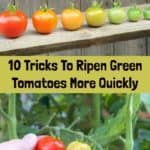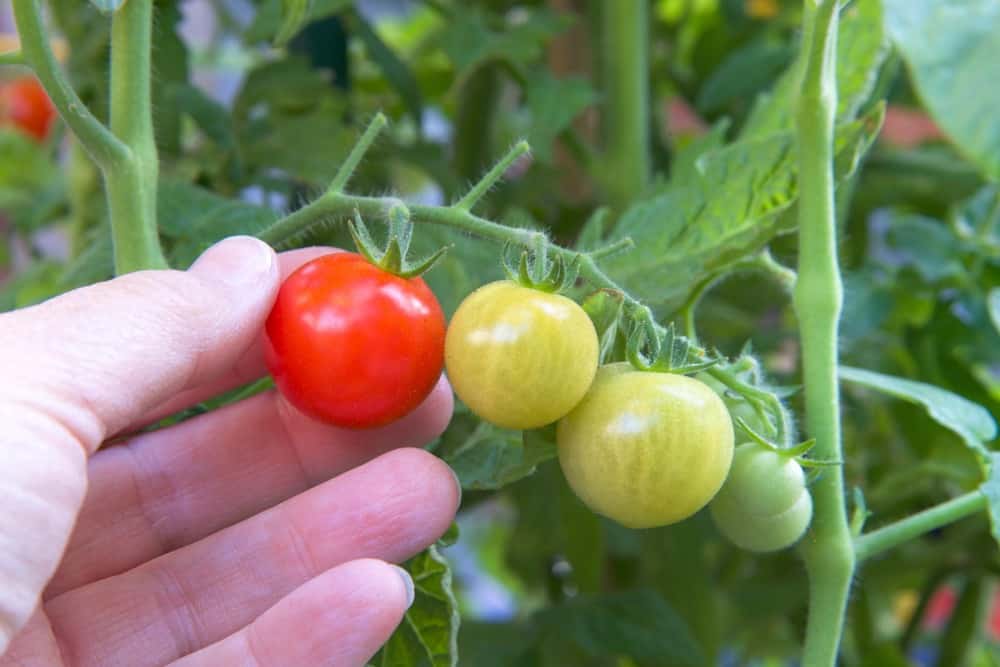
One of the major challenges that we face in cool temperate climates is the short growing season.
We are often in a race against the elements in our gardens, trying to get our harvests in before the first frosts.
As summer comes to an end and cooler weather arrives, many gardeners look at their tomato plants and worry that the green tomatoes on them will not ripen in time.
But do not worry. There are a number of things that gardeners can do to get tomatoes to ripen more quickly.
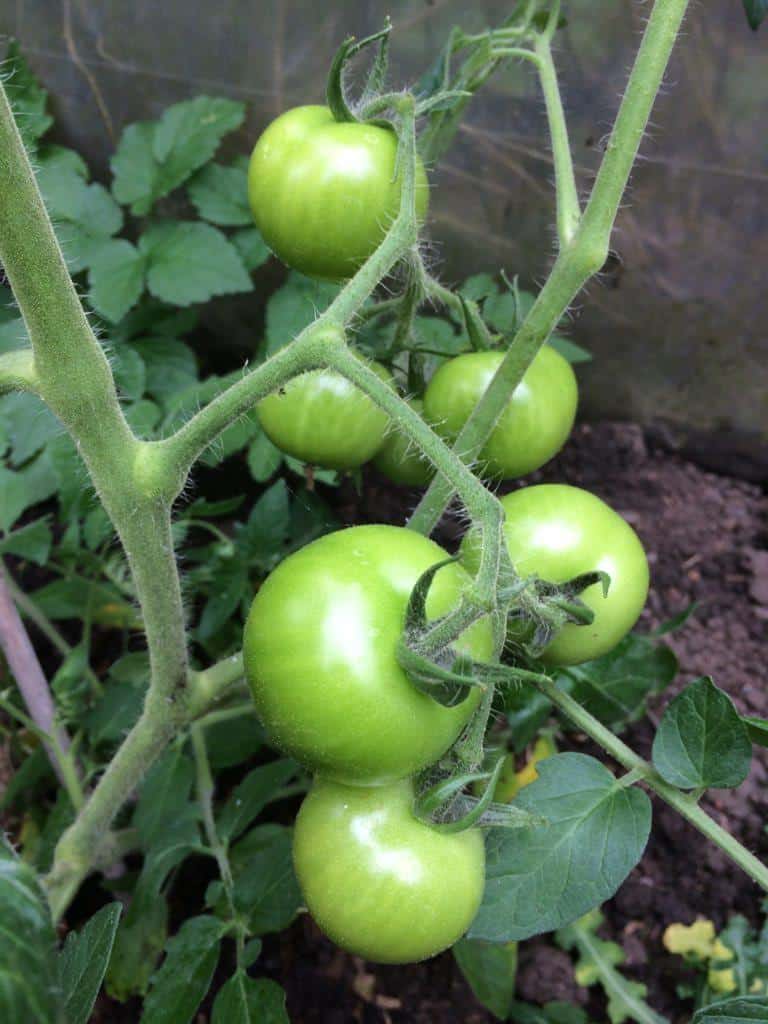
Reducing waste should be a key concern for all organic gardeners. All those who want to live more sustainably should do what they can to reduce waste in their gardens in all its forms.
One way to reduce waste is to maximise the productivity of all your plants. That includes your tomatoes.
So this month – follow these tips to make sure you get as many ripe, delicious tomatoes as possible:
1. Introduce More Protection for Tomatoes To Give Them More Time To Ripen
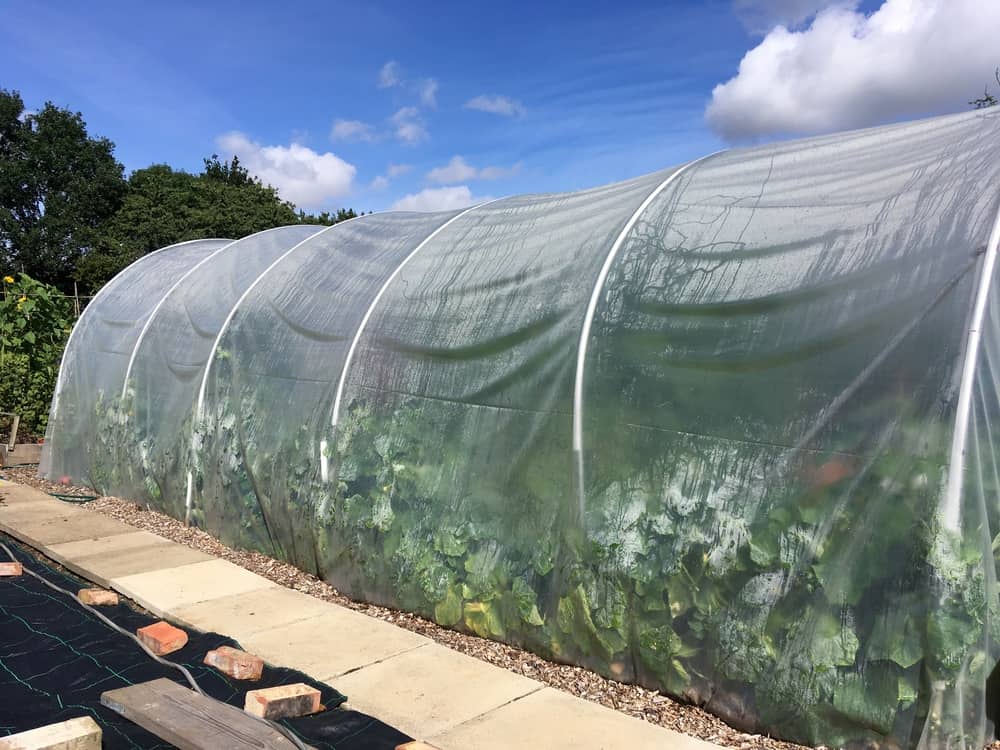
One of the most effective ways to reduce waste, and maximise production, is to extend your growing season by introducing some protection for your plants.
Personally, I grow my tomatoes in a polytunnel, which gives us that precious extra time for the crop to come to full fruition.
If you do not already grow your tomatoes under cover, however, you can still consider introducing some extra protection for those plants right now.
You could consider covering a row of tomatoes or individual plants with cloches or mini polytunnels or greenhouse structures.
You can also simply drape plants with horticultural fleece, bubble wrap, or another fabric or covering.
Try to use reclaimed materials, rather than buying things new – and think creatively about using things that you might already have to hand.
Covering your plants and giving then that extra protection can increase air temperature around them as the nights draw in. This can help the green tomatoes to ripen more quickly on the plant as well as buying you extra time.
If you are looking for some creative greenhouse ideas – big or small – take a look at our extensive roundup of DIY greenhouses here.
2. Increase the Temperature Around Tomatoes
In addition to covering your tomato plants to increase the temperatures around them and give the fruits more time to ripen, you can also increase the temperature around tomatoes in other ways.
For example, if you wished, you could consider sustainable ways to heat a polytunnel, greenhouse or other garden structure.
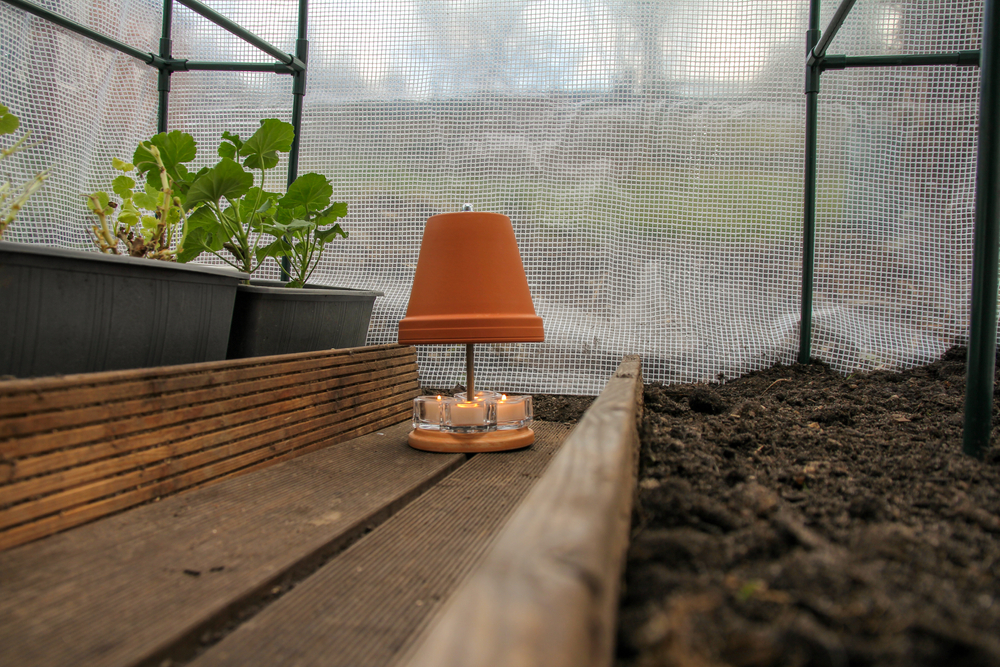
You could, for example:
- Introduce more thermal mass to a covered structure.
- Introduce composting straw and manure to an area to create a hot bed, which will gently warm the soil as the materials break down.
- Install a piped hot water heating system.
- Install some space heating run from renewable power. (For example, a solar electricity powered heater.)
- Placing a tea light beneath a plant pot for gentle, temporary heating. (Though obviously you should take care with naked flames.)
- Spend time with friends and family in a larger polytunnel. (Bear in mind that human body heat will warm the structure to a degree.)
Of course, if you grow tomatoes in grow bags or containers, you could also consider moving these to a warmer location in your garden, or bringing them under cover or even indoors, into your home.
3. Place a Ripening Banana or Other Ripening Fruit Underneath the Plants
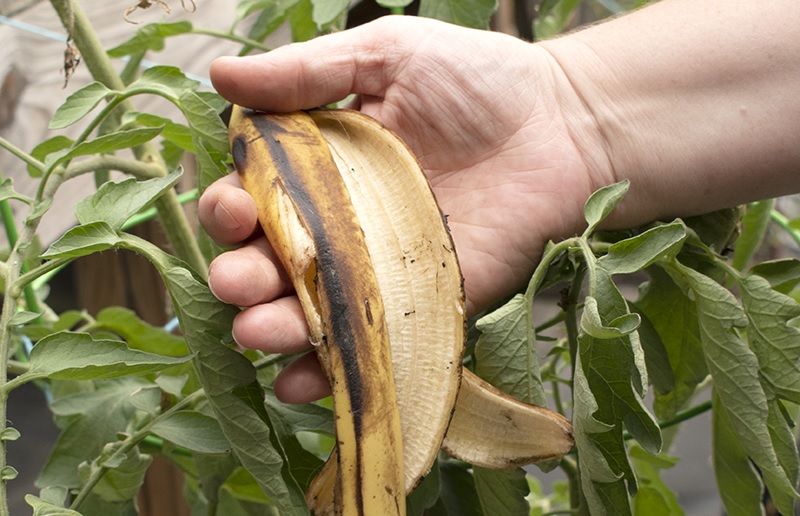
As fruits like tomatoes ripen, they give off a gas, ethylene, which will speed up the maturation of other fruits nearby.
Certain fruits give off more of this gas as they ripen than others. Bananas are famously high producers of ethylene.
Placing a ripening banana beneath a tomato plant will make the tomatoes ripen more quickly. This is the same reason that placing a banana in a fruit bowl will cause other fruits in the bowl to become over-ripe more quickly, and why you should keep these separate from other harvested fruit.
However, in a cool temperate climate, bananas are obviously not the easiest fruit to grow!
Rather than buying bananas, it may be more sustainable simply to use other fruits that you grow where you live.
As mentioned above, other fruits will also give off this ripening gas.
We tend to place a few bruised, over-ripe windfall apples from our orchard trees beneath our tomato plants at this time of year.
In addition to giving off ethylene, these will also simply rot down and add additional nutrients to the soil ready for the next planting phase.
4. Concentrate the Ethylene By Covering the Plants
Whether or not you are growing tomatoes within a larger covered structure to increase the temperature, extend the growing season and encourage the fruits to ripen, you can also concentrate the ethylene from the other fruits by placing a closer covering over your tomato plants.
Even within a polytunnel, some gardeners also choose to cover individual tomato plants, or tomato plant rows with some form of fabric covering, mini polytunnel or cloche.
The benefit of this is not only an increase in temperature, but also allows you to contain the gas given off by the fruits. The higher the concentration of ethylene gas, the faster your green tomatoes will ripen.
5. Cut Back on Watering Your Tomatoes
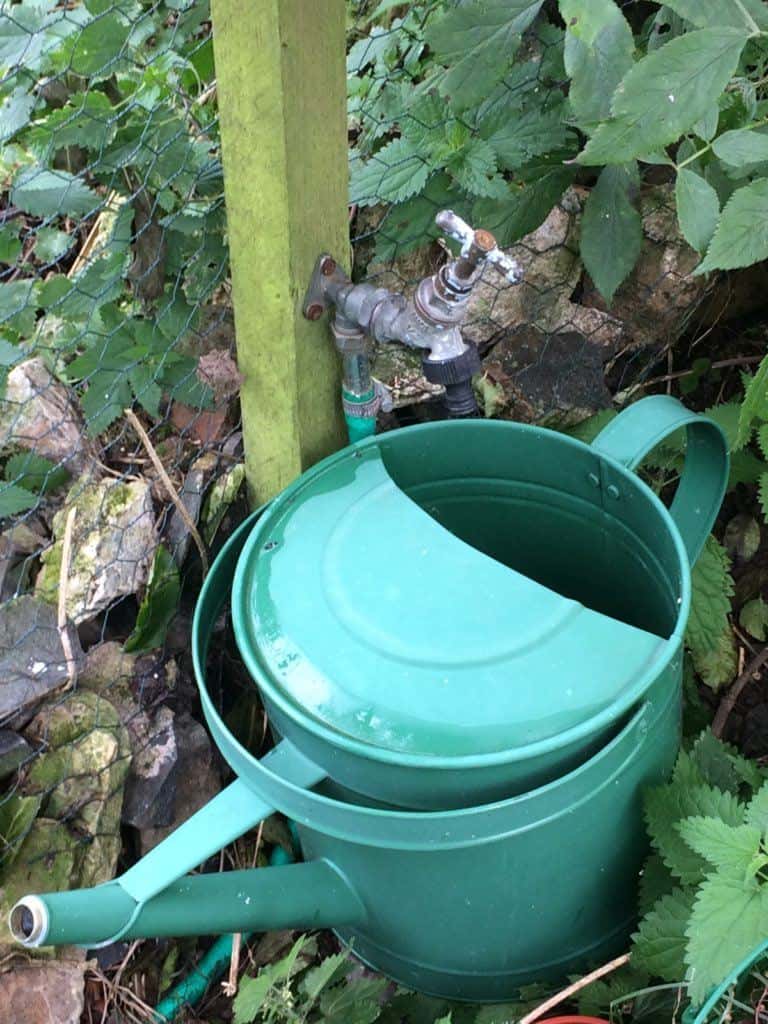
Another important thing to do if you want green tomatoes to ripen is to cut back on watering.
Your tomato plants will have required plenty of water over the summer months, as flowers and fruits formed. Now, however, cutting back on watering will stress the plants just enough to encourage them to mature fruits and seeds more quickly for their survival.
Do not allow your plants to dry out entirely, but if you have been watering every day, it could be a good idea to cut that back and water only once every two-three days (or even less frequently, depending on the temperatures and conditions).
6. Be Vigilant for Disease – Cut Off Any Affected Parts as Soon as Possible
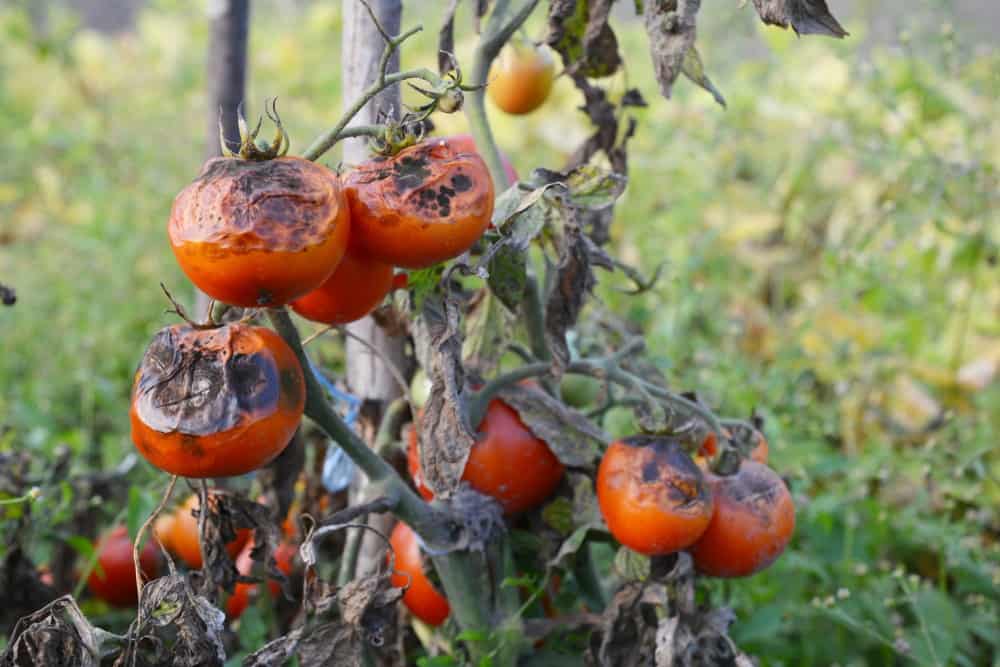
Tomato plants that are healthy will be far more likely to produce a viable yield of ripe fruits. Before you take other measures to encourage the green tomatoes on your plants to ripen, it is important to make sure that they are healthy.
Keen organic gardeners will know that observation is key. It is important to look closely at all your plants on a regular basis.
Be vigilant – looking out for pests and disease.
Blight can be an issue for tomatoes in late summer and early fall in some areas. If you see any blight, or other signs of disease on your plants, it is important to cut off any parts of plants that are affected as soon as possible.
Not only can removing any damaged or diseased sections increase the lives of your plants, it can also increase your yield of ripe fruits.
Plants that are busy fighting off disease will channel their energy into this rather than ripening fruits already on the vine.
7. Trim the Lower Foliage to Focus Plants on Ripening Fruit
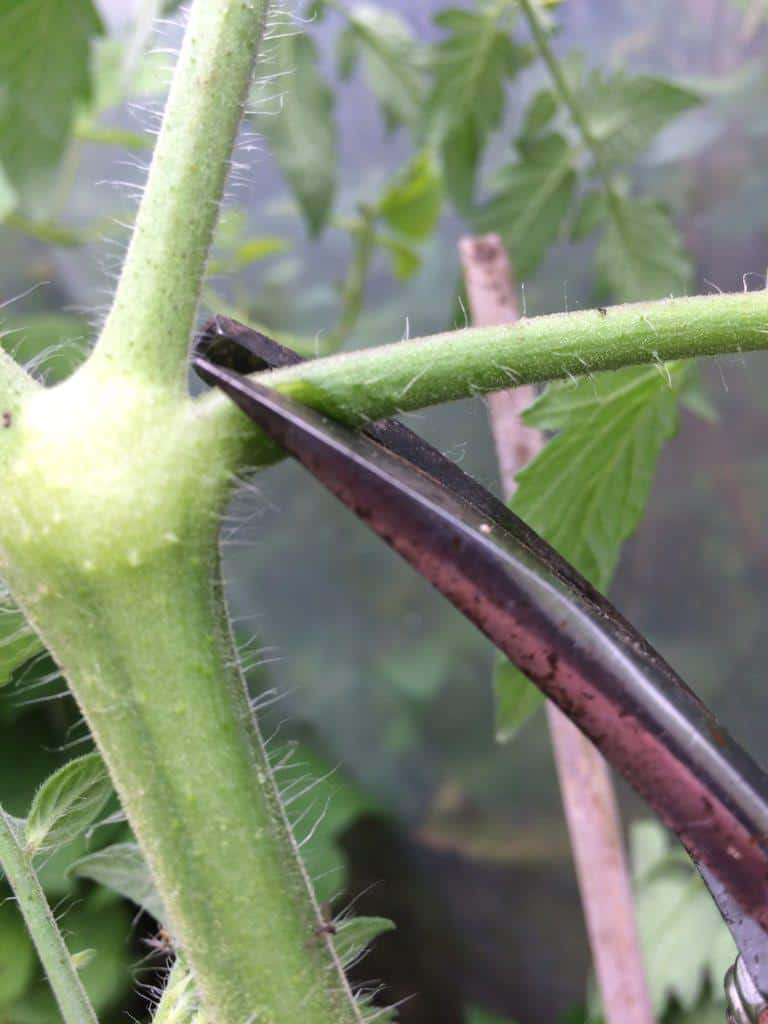
Another way to focus tomato plants on ripening fruit is to reduce their foliage.
Trim back foliage lower down on the plants. This will not only focus the plants less on photosynthesis and more on ripening fruits. It will also increase the levels of sunlight that reach the fruits, which will increase the speed at which they mature fully.
Try to focus on removing foliage that is blocking light from fruits, so that they are fully exposed to sunlight.
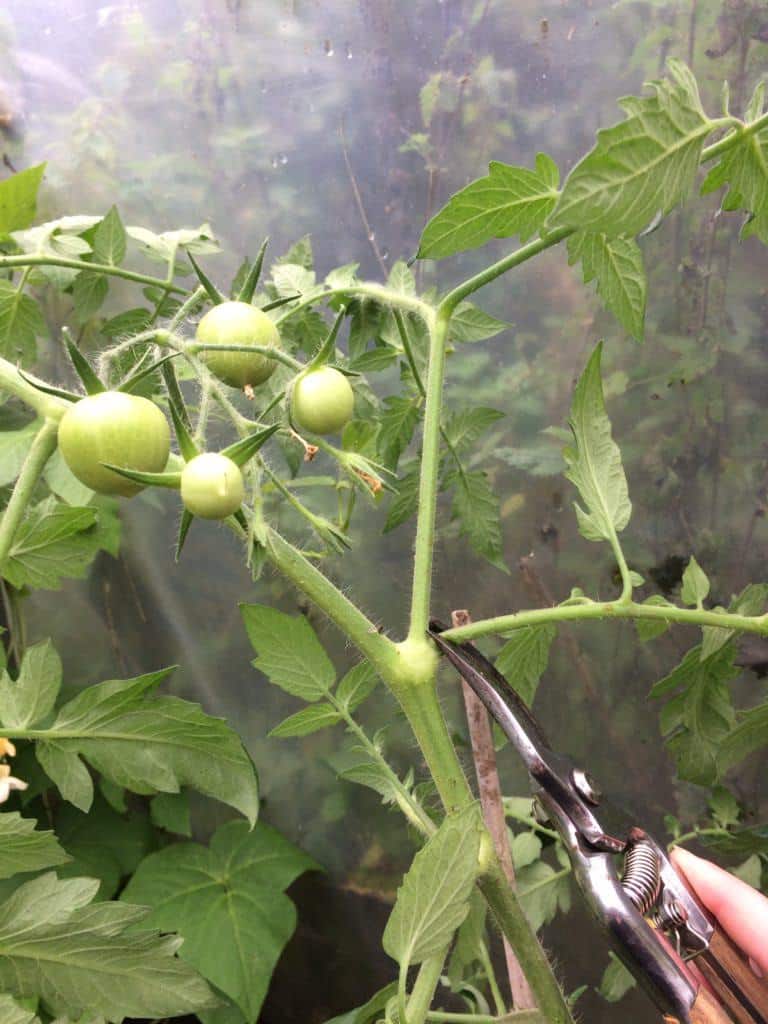
8. Remove New Flowers
At this time of the year, you do not want your tomato plants to produce more flowers, as these flowers are unlikely to have time to mature into fully formed fruits.
Pinch or cut off any new flowers that form, so that the plants focus on maturing the fruits that are already approaching maturity.
9. Cut Off Any Small Fruits
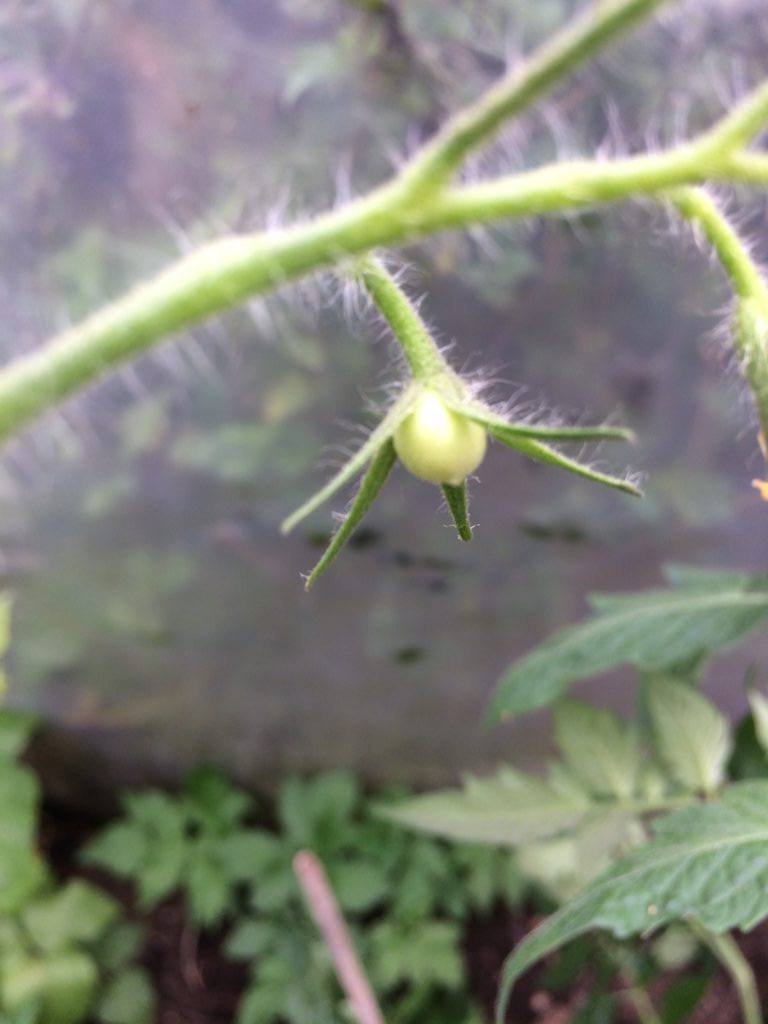
It is also a good idea to cut off any tiny fruits that have recently formed, as, again, these are unlikely to have the time to ripen fully.
Removing these tiny fruits may seem harsh, but getting rid of these is one more way to encourage the plants to put all their energy into ripening the fruits that have already formed, and which are closer to being ready to eat.
10. Give Your Tomato Plants a Shock
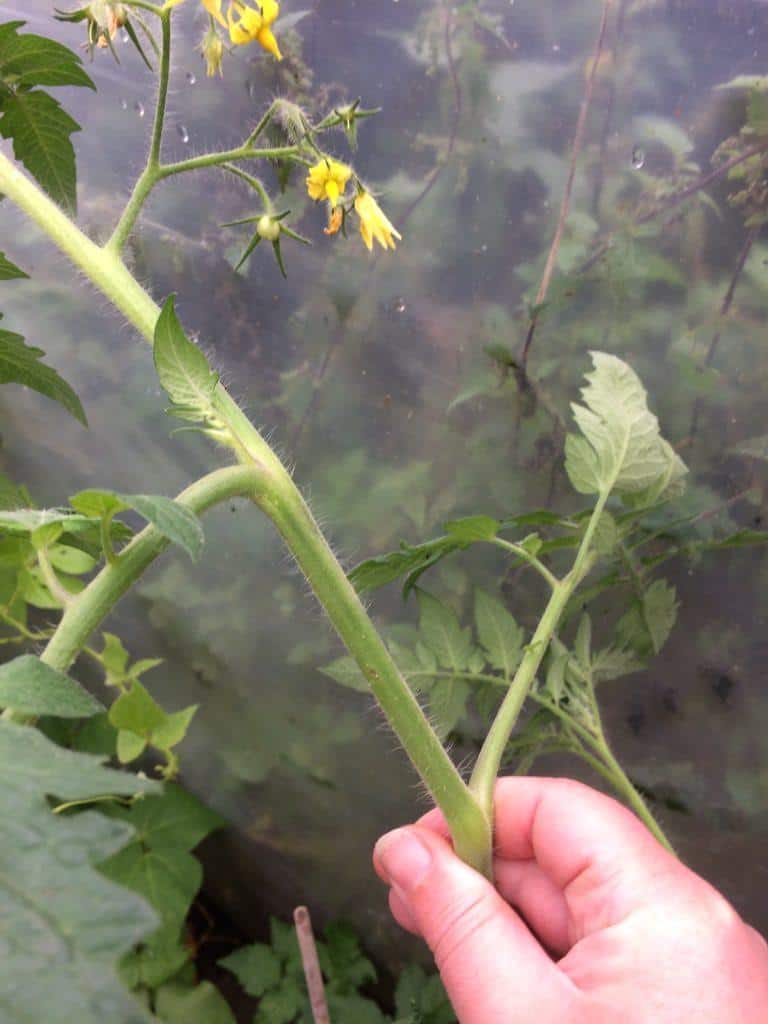
Finally, there is one more way to get tomatoes to ripen more quickly on the growing plants, and this is to give your tomato plants a shock.
This may sound rather brutal, but shocking tomato plants will put them into ‘survival mode’ which will make them rush to try to produce viable seed. This means fruits will ripen a little more quickly.
To shock your tomato plants, grasp the plants firmly by the stem and give them a gentle tug to loosen their root system.
Ripen Tomatoes on the Vine, Out of the Ground
Even if you take the measures described above, you may still find that there are still unripe tomatoes that have not quite yet fully matured when the first frosts arrive.
Tomato plants that are not quite ripe can be ripened indoors.
For best flavour, it is always best to try to mature these on the vine, even when you have had to take the plants out of the ground and bring them indoors.
You can hang your tomato vines indoors, or place them in a bag or drawer with ripening fruits off-gassing ethylene to speed up this process.
Using Green Tomatoes in Your Kitchen
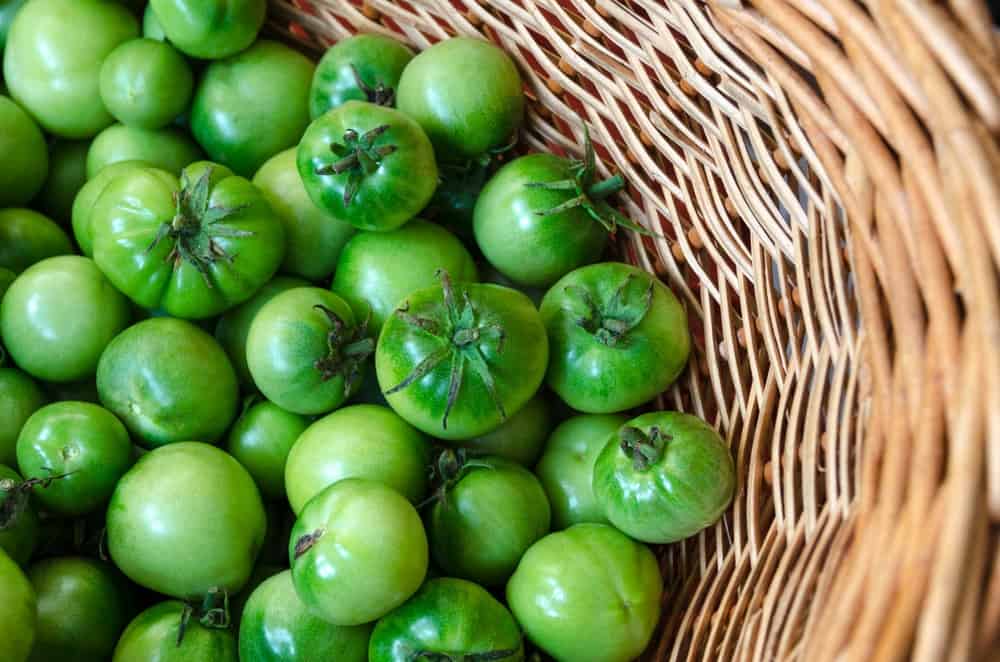
If all else fails, it is important to realise that tomatoes that have reached their full size (or almost full size) but which are not yet fully ripe can still be used in a number of recipes in your kitchen.
For example, you can use these slightly unripe tomatoes to make a zingy green tomato salsa or famous fried green tomatoes.
Plus, here are 21 more brilliant ways to use unripe green tomatoes in your kitchen.
As the end of the growing season fast approaches, make sure that you prevent waste, and make the most of your tomato harvest.
By using the above techniques to get tomatoes to ripen more quickly, and using up any tomatoes that are left, you can make sure you get as much as possible from each and every tomato plant that you grow.
More Tomato Growing Goodness
The Secret Tomato Pruning Trick For Huge Harvests
How To Hand Pollinate Tomatoes Grown In Greenhouses
How To Grow Upside Down Tomato Plants
My Homemade Tomato Fertilizer Recipe Perfected Over 30 Years
10 Pro Tips For Growing Tasty & Abundant Tomatoes
Pin This To Save For Later
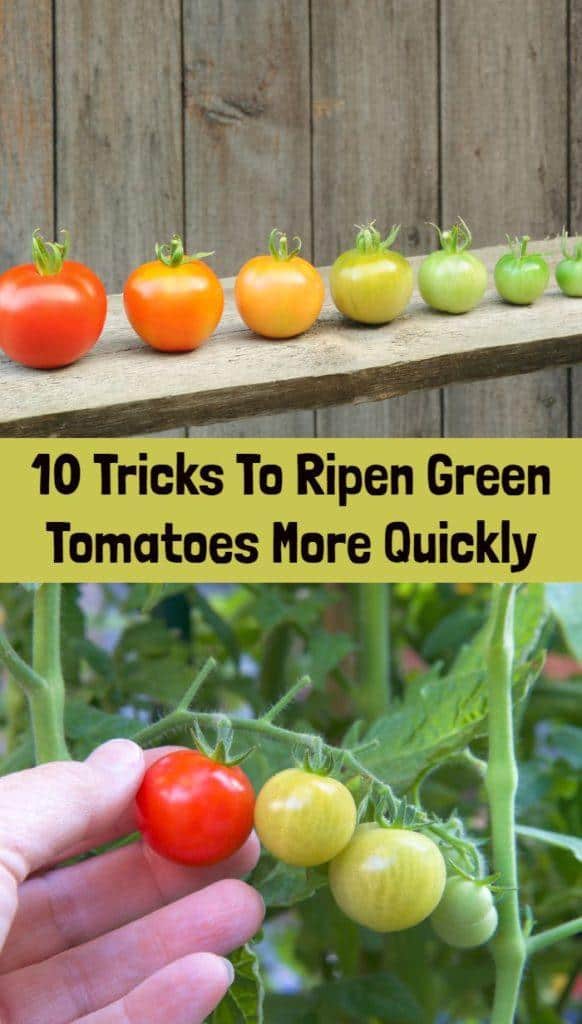

Get the famous Rural Sprout newsletter delivered to your inbox.
Join the 50,000+ gardeners who get timely gardening tutorials, tips and tasks delivered direct to their inbox.


